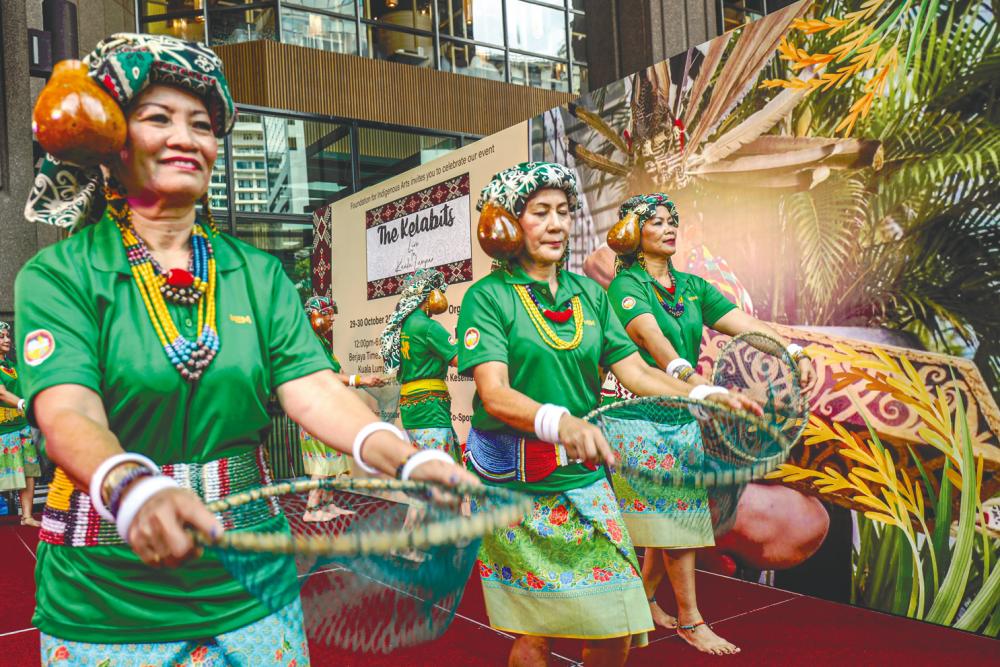KUALA LUMPUR: Sarawak’s Kelabit community who live in Kuala Lumpur put on a show recently that opened the eyes of peninsula residents to their culture and traditions.
Held at Berjaya Times Square and organised by the Foundation for Indigenous Art, “The Kelabits Live in Kuala Lumpur” event attracted an audience of hundreds over two days.
Foundation chairman Dr Andre Ratos said the event was a continuation of the legacy of his late father Datuk Anthony Ratos and his love for the Orang Asli community.
“My father made me promise to continue his legacy of preserving the heritage of the Orang Asli.
“He said it was important to continue giving them support and maintaining their dignity through their woodwork carvings,” Andre told theSun.
Kelabit dancers who performed at the event were specially flown in from the Bario highlands, in Sarawak.
Those present expressed awe at the graceful moves of the dancers and their intricate costumes, with many later trying their hand at stringing colourful beads at a workshop held during the event.
Anthony, a Kirkby College graduate, said his initial encounter with the Orang Asli as a teenager led to a lifelong connection to them. His father was an art teacher and later served as a deputy commissioner of Orang Asli Affairs in Pahang.
Anthony discovered the wood carving skills of the Jah Hut community and that became the basis of his vast wood carving collection, which he later donated to the National Museum.
“Because the indigenous people in Gombak taught him to live off the land, he developed a passion for them.
“He later promoted and encouraged the Kelabit to develop their art and portray their animistic beliefs through their wood carvings as a means of preserving their culture.
“He’d buy their wood art when he visited them, thus providing income for them. Today, we’re just following in his footsteps and continuing his legacy,” Andre said, adding that the senior Ratos had amassed the largest Orang Asli craft collection of about 500 pieces.
“The sculptures represent their animistic beliefs, such as the wood spirit called Moyang Lanjut (of the Mah Meri people). This forms their identity,” he said.
At a press conference later, Istana Budaya director-general Zubaidah Mukhtar echoed Andre’s comments and said cultural preservation is in line with Malaysia’s National Tourism Policy 2020-2030, which is a blueprint to help the tourism industry recover from the Covid-19 pandemic.
“With some (Orang Asli youth) leaving the countryside, I believe we need to create more attractions to get the interest of young people. They can learn a skill and return to serve their community,” she said.










